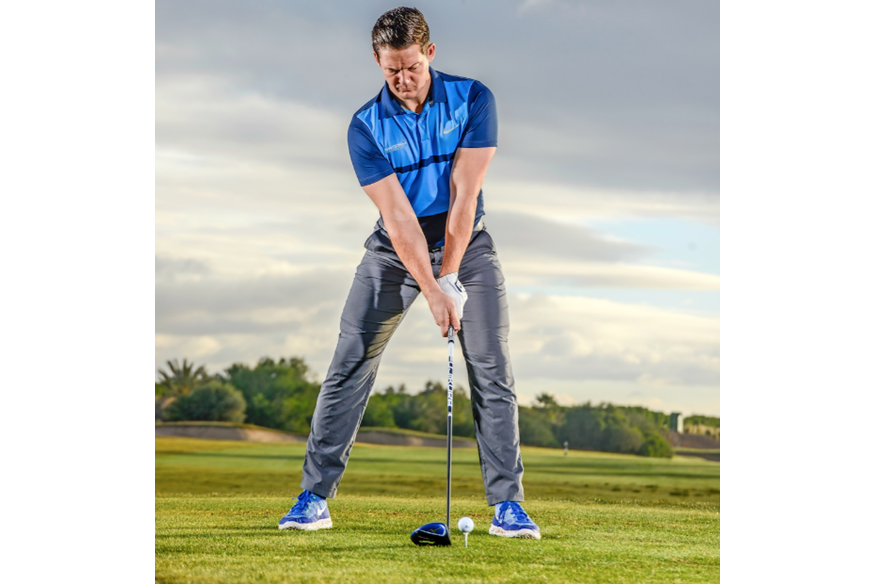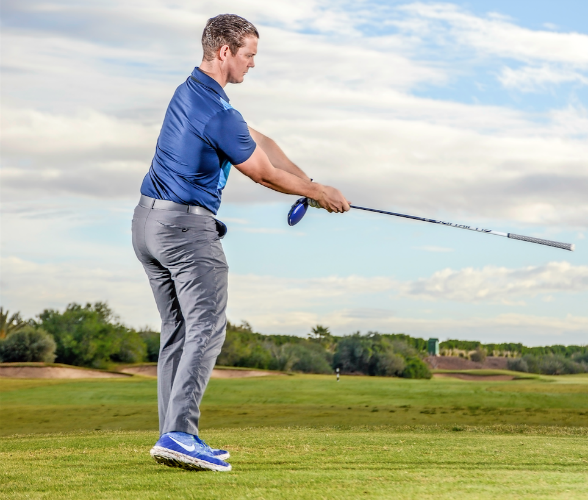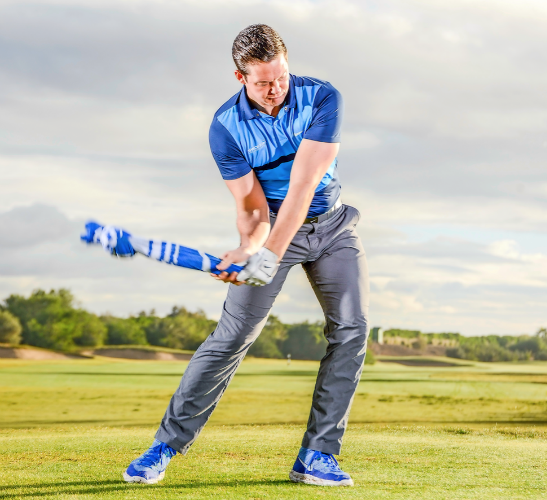4 drills to increase your clubhead speed
Last updated:
A faster clubhead means longer shots. But you don’t need bulging muscles – just a better technique
We don’t need a launch monitor to tell us that if we move the ball faster we increase our potential for hitting the ball further. Boosting your speed, though, is not quite as simple as it sounds. Increased speed cannot come at the expense of strike. Move faster at the expense of control and you’re robbing Dustin to pay Sergio. The first thing to establish is that increasing speed doesn’t mean a faster swing; it only means a faster clubhead at impact.
The drills here cover elements like timing and sequencing to help you gain clubhead mph at the right time. The second thing is that many golfers think you need strength to move the club at speed. OK, it can help. But increasing club and ball speed is much more to do with technique than muscle. I will show you how to hone that technique… and as ever in golf, it starts with your set-up.
TG Top 50 coach Gareth Johnston talks you through four different drills to help you increase club-head speed
Drill One: Set Up For Speed
Your set up influences how energy is transferred to the ball. A good address creates the right attack angle and dynamic (impact) loft, optimising ball speed.

Chest Behind Ball: Nudge the hips forward and your spine begins to lean away from the target. This gives you the feeling of setting your chest behind the ball – and that creates space and time to build speed coming into impact
Shoulders Angled Up: That spine angle tilt promotes a fluent upward sweep through the ball. This is how you find the middle of the face – but it also keeps the club’s attack angle and impact face loft as close together as possible – a key to efficient energy transfer.
More Support: That sharper angle in your trail leg creates a more robust support for the backswing, allowing you to coil deep into your trail hip with less risk of swaying. This delivers a much more torquey and powerful rotation, and one that translates into extra speed on the way down.
Make a ‘backward K’: To optimise impact efficiency, bunt your hips towards the target. Exaggerate the feel so your lead hip will feel like it sits slightly higher. Do not allow your head to move with the hips; it should retain its position, helping you keep your weight 50-50.
Gap check: Work on that upper-body tilt, making sure you bend from the hips and your spine remains extended. Then maintain it with the club itself as you take your address. Feel your hands are under your chin, and check there is a fist- shaped gap between your hands and thighs.
Full drill & further pictures here
Drill Two: How to Train Speed
In many sports that need speed athletes train using lighter gear to promote faster movement. You can take this approach, too – by turning a club upside down.

Shaft horizontal: Grip your driver up by the head, and hold the shaft horizontally out in front of you. It’s much easier to create and experience speed when making a flat, baseball-style swing.
Find your speed limit: Swing the club around you, keeping the shaft horizontal. Simply try to create the loudest swish you can achieve. Feel how, the faster you try to swing the shaft, the more your entire body wants to engage.
Baseball hit: Now flip the club the right way round. Your goal is the same – to find your loudest swish. This will come when you allow your lower body rotation to pull the club forward, your hands and arms arriving later at the ball.
Speed of sound: Finally, with that feeling of speed fresh in your muscle memory, take your posture and swing the club normally. Take that freedom from the baseball swing into this action and you’ll hear that later swish… and more speed at the right time.
Full drill & further pictures here
Drill Three: Fire Your Big Muscles
To throw a ball you’d plant your front foot, before driving your hips forward. The last thing to fire is your hand and ball. The swing’s speed sequence is no different…
Driving Test: Your goal on this drill is to get the ball skipping down the fairway, bouncing-bomb style, as fast as possible. Spend a little time working out how to achieve this. If you can move from the ground up, you’ll create more speed and power.

Later Release: You’ll feel that when you create your maximum speed, your hand and arm feel like they release the ball after your body has moved through. This relates to the golf swing’s “late hit”, the body pulling through the arms and then the club.
Ready to hurl: This drill asks you to throw a ball as hard as possible down your target line, but from a golfing motion. Start by holding a ball in your trail hand, and fold your lead arm behind your back. Take your golfing posture
Repeat the ball throw with a driver: After you’ve got used to developing speed through your throwing action, move on to a club. Grip your driver and make a practice swing, inside the ball. Just aim to replicate a ball-throwing motion, even looking down the fairway.
Club thrower: As with the throw, focus simply on developing speed – almost as if you are going to throw the club as far as possible down the fairway. Commit to this and you’ll recruit those hip and glute muscles at the start of your downswing, adding speed to your motion.
Leading Role: When you’re used to the feeling of that lower body- driven release, go ahead and hit the ball. That throw and the aggressive practice swing should be enough to remind your lower body of the leading role it plays in pulling the club through.
Clear Progress: Your twin feelings should be of your lead side clearing during the downswing, and the club arriving later at the ball. If you start to feel more side-on, with a weaker hand- arm release, return to that throwing drill to get your lower half more dominant.
Full drill & further pictures here
Drill Four: Improve Your Timing
It’s vital your movements remain smooth and coordinated; it’s too easy to snatch the club back and through. For this drill, get a towel and knot the end for added weight.

Tap on the shoulder: Grip your towel like a golf club and address an imaginary ball, allowing the knotted end to hang. Swing back to the top. Wait to feel the knot hit your trail shoulder.
Create some lag: The weight of the knot in the towel will also help you feel so-called “lag” approaching impact, the club lagging behind you. While this is key to club speed, it is a by-product of good sequencing and not something you should try to create.
Later Release: Now start down, using the ground-up feel you developed in the ball-throwing drill. Feel your weight plant over your front foot and your lead knee and hip start to unwind. But also, feel the towel stays on your shoulder as you start down.
New Order: Snatch the club down with your hands and arms and the knotted end of the towel comes away from your shoulder. By retaining that connection for a beat into the downswing, you ensure the lower body will lead and the hands and arms will follow.

